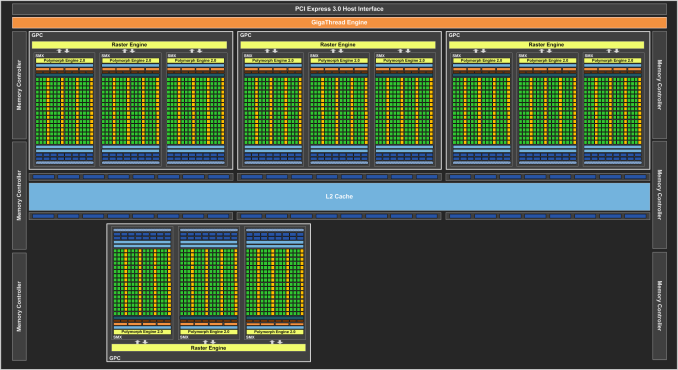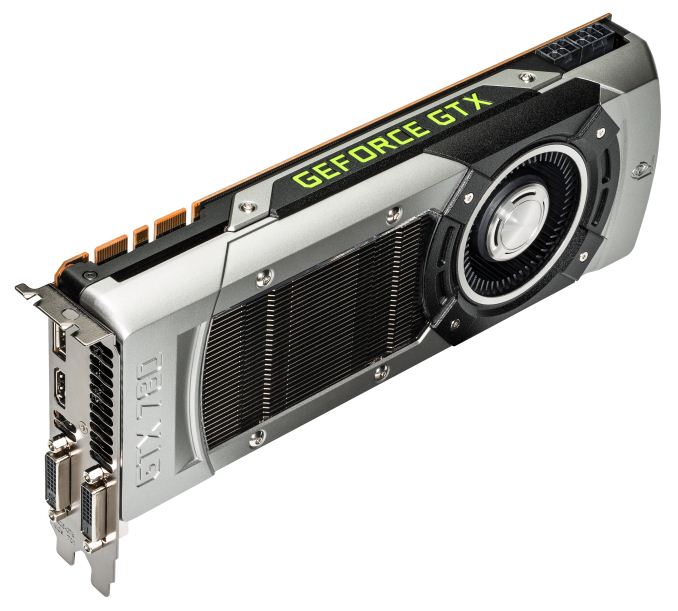 Dragoon20005, on 23 May 2013 - 11:05 PM, said:
Dragoon20005, on 23 May 2013 - 11:05 PM, said:
so in a way those who spent a bomb on the GTX Titan got ripped off since the upcoming GTX 780 performance is close to the Titans and at a cheaper price.
The Titan is a prosumer piece of gear. The 780 is dedicated to gaming. There are serious trade offs with either one.
http://www.anandtech...-gtx-780-review
As the first of the desktop GeForce 700 lineup, GeForce GTX 780 is in almost every sense of the word a reduced price, reduced performance version of GTX Titan. This means that on the architectural side we’re looking at the same GK110 GPU, this time with fewer functional units. Titan’s 14 SMXes have been reduced to just 12 SMXes, reducing the shader count from 2688 to 2304, and the texture unit count from 224 to 192.
At the same time because NVIDIA has gone from disabling 1 SMX (Titan) to disabling 3 SMXes, GTX 780’s GPC count is now going to be variable thanks to the fact that GK110 packs 3 SMXes to a GPC. GTX 780 cards will either have 5 GPCs or 4 GPCs depending on whether the 3 disabled SMXes are all in the same GPC or not. This is nearly identical to what happened with the
GTX 650 Ti, and as with the GTX 650 Ti it’s largely an intellectual curiosity since the difference in GPCs won’t notably impact performance. But it is something worth pointing out.

Moving on with our Titan comparison, much to our surprise NVIDIA has not touched the ROP/memory blocks at all (something they usually do), meaning GTX 780 comes with all 48 ROPs tied to a 384bit memory bus just as Titan does. Clockspeeds aside, this means that GTX 780 maintains Titan’s ROP/memory throughput rather than taking a performance hit, which bodes well for ROP and memory-bound scenarios. Note however that while the memory bus is the same width, NVIDIA has dropped Titan’s massive 6GB of RAM for a more conservative 3GB, giving GTX 780 the same memory bandwidth while giving it less RAM overall.
As for clockspeeds, clockspeeds have actually improved slightly, thanks to the fact that fewer SMXes need to be powered. Whereas GTX Titan had a base clockspeed of 837MHz, GTX 780 is 2 bins higher at 863MHz, with the boost clock having risen from 876MHz to 900MHz. Memory clocks meanwhile are still at 6GHz, the same as Titan, giving GTX 780 the full 288GB/sec of memory bandwidth to work from.
Taken in altogether, when it comes to theoretical performance GTX 780 should have 88% of Titan’s shading, texturing, and geometry performance, and 100% of Titan’s memory bandwidth. Meanwhile on the ROP side of matters, we actually have an interesting edge case where thanks to GTX 780’s slightly higher clockspeeds, its theoretical ROP performance exceeds Titan’s by about 3%. In practice this doesn’t occur – the loss of the SMXes is far more significant – but in ROP-bound scenarios GTX 780 should be able to stay close to Titan.
For better or worse, power consumption is also going to be very close between GTX 780 and Titan. Titan had a 250W TDP and so does GTX 780, so there won’t be much of a decrease in power consumption despite the decrease in performance. This is more atypical of NVIDIA since lower tier products usually have lower TDPs, but ultimately it comes down to leakage, binning, and the other factors that dictate how GPU tiers need to be structured so that NVIDIA can harvest as many GPUs as possible. On the other hand the fact that the TDP is still 250W (with the same +6% kicker) means that GTX 780 should have a bit more TDP headroom than Titan since GTX 780 has fewer SMXes and RAM chips to power.

On a final note from a feature/architecture standpoint there are a couple of differences between the GTX 780 and GTX Titan that buyers will want to be aware of.
Even though Titan is being sold under the GeForce label, it was essentially NVIDIA’s first prosumer product, crossing over between gaming and compute. GTX 780 on the other hand is a pure gaming/consumer part like the rest of the GeForce lineup, meaning NVIDIA has stripped it of Titan’s marquee compute feature: uncapped double precision (FP64) performance. As a result GTX 780 can offer 90% of GTX Titan’s gaming performance, but it can only offer a fraction of GTX Titan’s FP64 compute performance, topping out at 1/24th FP32 performance rather than 1/3rd like Titan. Titan essentially remains as NVIDIA’s entry-level compute product, leaving GTX 780 to be a high-end gaming product.
Meanwhile, compared to the GTX 680 which it will be supplanting, the GTX 780 should be a big step up in virtually every way. As NVIDIA likes to put it, GTX 780 is 50% more of everything than GTX 680. 50% more SMXes, 50% more ROPs, 50% more RAM, and 50% more memory bandwidth. In reality due to the clockspeed differences the theoretical performance difference isn’t nearly as large – we’re looking at just a 29% increase in shading/texturing/ROP performance – but this still leaves GTX 780 as being much more powerful than its predecessor. The tradeoff of course being that with a 250W TDP versus GTX 680’s 195W TDP, GTX 780 also draws around 28% more power; without a process node improvement, performance improvements generally come about by moving along the power/performance curve.
Edited by Bad Karma 308, 24 May 2013 - 04:19 AM.

































